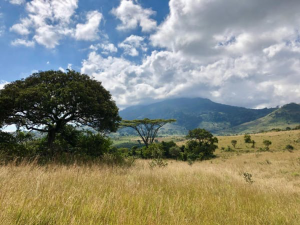By Vanessa Moss
SEATTLE —Trees are having a moment.Researchers around the globe are finding new ways to track deforestation, and campaigns to plant trees are advertised to the public as an antidote to climate change. But as eyes turn to the treetops, a critical ecosystem is being left to struggle below.
Threats to grasslands and the communities residing within them took centerstage during a Feb. 19 talk at the American Association for the Advancement of Science (AAAS) annual meeting.
Grasslands are found on every continent, spanning deserts to tundra. They host an immense diversity of plants and wildlife — from field mice in Oklahoma to giraffes in Kenya — including species that are found nowhere else. Despite the diversity among grasslands, two problems are universal: their degradation is both insidious and understudied.
“It is a very tough battle to communicate effectively with conservation agencies, governments, and scientists who have a very deeply embedded cultural bias towards forests and trees,” said University of Edinburgh biogeographer Caroline Lehmann.Ginger Allington has coined a term for it: forest hegemony.
Allington, a biogeographer at George Washington University, sees research on forest loss as dynamic, tackling various aspects of the problem: There’s forest destruction, alteration, fragmentation, and other variables.
“But grasslands are seen as a single unit,” Allington said. “There is so much more nuance going on within there that we really need to understand.”
In some places, the emphasis on trees actively threatens native grasslands: Trees are being planted in areas that historically have been grasslands, expanding one ecosystem at the expense of another.
Grasslands around the world are controlled by three major ecological players: Dryness, fire, and grazing. These dynamics have interacted for millions of years to create a unique suite of notably non-tree flora. For example, in Madagascar scientists have identified more than 220 grass species that exist nowhere else on the planet. But Lehmann and her peers say little is being done to protect them.
“There’s a very strong narrative in Madagascar that all the grasslands are a product of ‘nasty’ people clearing trees out of their land,” Lehmann said.
Except, in reality, Madagascar’s grasslands have likely existed for more than three million years. Where grasses prevail, herders follow. And livestock grazing by pastoral communities is an ancient means of human survival.Today, land privatization, the fragmentation of habitats by roads and fences, and the encroachment of forests threaten both historic ways of life and native biodiversity.
On the Mongolian plateau in central Asia, drought and fire have always defined resource availability on a season by season basis. Before the region was divided into Mongolia and China, those limitations were tolerable. Herders could “chase the rain” wherever it led. But since the imposition of a border and different land management plans, pastoralists have been confined to smaller areas, whether or not they are best for livestock.
In open systems, cattle grazing encourages a mosaic of diverse species, but fragmented habitats encourage overgrazing. Fences and property lines hem herders into isolated areas and force them to overwork the land.
As with Mongolia, the East African Rift Valley depends on mobility of both wildlife and pastoralists. Grazers such as elephants and zebras depend on free movement across habitats just as much as cattle and goats do. When people found towns or lay new roads, this fragmentation threatens the success of both groups, said Kathleen Galvin, an anthropologist and geographer at Colorado State University.There’s not one clear way to tackle grassland conservation. Efforts need to be dynamic, bridging scientific disciplines and working at local, national and international scales, Gavin said. Encouraging resilience and adaptability, both in ecosystems and people, takes understanding of the explicit differences among individual grasslands.
“I think it’s very tempting to have flashy, prescriptive headlines, like ‘We need to plant one trillion trees to combat climate change’” Allington said, adding that such cookie-cutter policies, as she calls them, don’t allow for cultural, economic, or biological differences in the landscape.
In some grasslands, livestock grazing is problematic. In others, human use can actually help protect grassland biodiversity.
In Madagascar, for example, human and cattle introduction led to a slow, 1700-year decline of native Malagasy megafauna such as giant tortoises and miniature hippos. Now, the ecological niches that these animals once filled in Madagascar’s savannas have been taken by cattle.
Because of this substitution, very few of the many grass species dependent on grazing went extinct. Today, those species are preserved by cattle, but threatened by well-meaning environmentalists planting trees.
Beyond the specificity of each grassland’s needs, there’s also a pragmatic challenge to monitoring grassland destruction. A removed mountaintop or a clear-cut forest gouges obvious scars into the landscape. Grasses are subtle. And their loss? Almost silent.
“It is very, very hard to say ‘There is a degradation process happening within this grassland,’ before you get to ‘There is no grassland,’” Allison said.
Vanessa Moss is a senior at Sewanee: The University of the South, studying ecology and biodiversity. She was a science writing intern for Duke University, a news editor for The Sewanee Purple student newspaper, and a Planet Forward 2018 Storyfest winner. Find her clips, contact information, and resume at her website.








